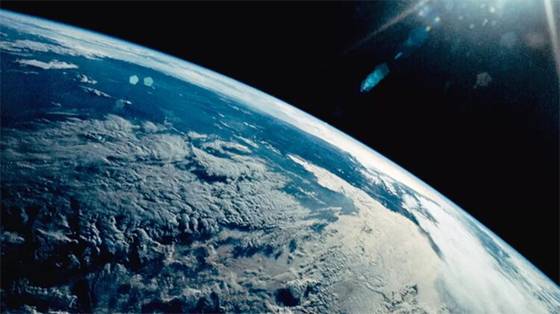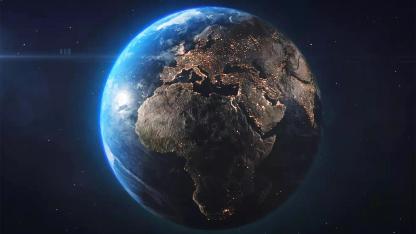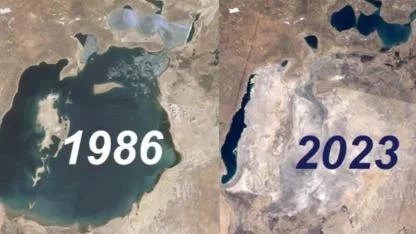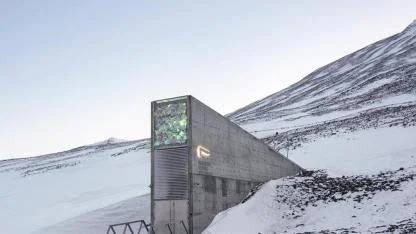Scientists reveal exactly how long before Earth will run out of oxygen in terrifying prediction
Researchers from Toho University and the Georgia Institute of Technology have modeled the distant future of Earth’s atmosphere, revealing a dramatic collapse of oxygen levels in roughly one billion years. This finding challenges the long-held estimate of two billion years and paints a far more fragile picture of our planet’s biological stability.

Using advanced climate models and hundreds of thousands of simulations, the scientists examined how geological processes, solar evolution, and biological cycles interact across deep time. The results show that Earth’s oxygen will drop rapidly, transforming the planet back into an environment similar to its ancient, pre-oxygen era. While this timeline is far beyond human lifespans, the research highlights how delicate Earth’s atmosphere truly is—and raises urgent questions about sustainability, long-term climate resilience, and humanity’s technological future.
How scientists discovered Earth’s future atmospheric collapse
The study, published in Nature Geoscience, was led by researchers Kazumi Ozaki and Christopher Reinhard. They used computer models to simulate the complex feedback loops between life, geology, and solar radiation. By running more than 400,000 scenarios, they were able to identify how Earth’s changing environment will respond to increasing solar luminosity and biological processes over millions of years. According to their analysis, as the Sun becomes brighter and hotter, Earth will experience a decline in carbon dioxide levels, reducing the ability of plants to photosynthesize. This will cause atmospheric oxygen to drop rapidly. Instead of a slow decline, the planet will face a sudden, sweeping transformation. The researchers found consistent evidence that Earth’s breathable atmosphere will last only 20–30% of the planet’s entire history, highlighting how temporary this oxygen-rich phase actually is.
What Earth will look like after massive deoxygenation
One of the most startling predictions from the research is the dramatic environmental shift that will occur once oxygen levels collapse. As plants lose their ability to generate oxygen, methane will accumulate in the atmosphere, creating a greenhouse-rich environment. Carbon dioxide levels will continue to decline, and the ozone layer—Earth’s protective shield against harmful radiation—will disappear entirely. In this future world, oxygen-dependent organisms will not be able to survive. Instead, Earth will once again resemble its early geological state, hosting primarily anaerobic life forms that thrive without oxygen. While this transformation is expected to happen far in the future, it underscores how dynamic and vulnerable Earth’s atmosphere truly is.
What this discovery means for climate science and sustainability
Although one billion years feels unimaginably distant, the implications of this study are surprisingly relevant to modern environmental science. Understanding how Earth’s atmosphere responds to long-term changes helps scientists refine climate models, improve sustainability research, and better predict how ecosystems behave under stress.

The findings also reinforce the importance of protecting today’s atmosphere, which is far more delicate than many assume. As concerns grow surrounding carbon emissions, global warming, and climate instability, research like this provides vital insight into the complex systems that keep our planet habitable. Scientists emphasize that while Earth’s future deoxygenation is natural and inevitable, today’s atmospheric disruptions—driven by human activity—represent accelerated risks that must be addressed in the near term.
How the study influences the search for life on other planets
The research has far-reaching implications for astrobiology. For decades, scientists searching for extraterrestrial life have looked for planets with oxygen in their atmospheres, assuming it to be a universal sign of biological activity. However, this study suggests that oxygen-rich phases may represent only a small fraction of a planet’s total lifespan. This means many habitable worlds might exist without detectable oxygen, simply because they are in earlier or later evolutionary phases. As a result, astronomers may need to rethink how they evaluate exoplanets and identify life-supporting conditions. The study encourages a broader approach to interpreting planetary atmospheres and highlights the need for more advanced observational tools in the future.
How the findings are shaping future technology and the emerging “oxygen economy”
Beyond science, Earth’s long-term atmospheric fate is already influencing technological development and global industries. As governments and companies invest heavily in climate resilience, AI-powered environmental forecasting, and carbon capture technologies, innovations tied to atmospheric health are becoming increasingly valuable. The study has contributed to rising interest in what some economists now call the “oxygen economy”—a growing sector focused on air purification, sustainable energy, space colonization, and environmental engineering. Investors are expanding into green bonds, space exploration ventures, and eco-innovation startups dedicated to preserving Earth’s future habitability. These trends reflect a growing recognition that maintaining a stable atmosphere is not only a scientific mission but also a major economic frontier. The discovery serves as a powerful reminder that understanding our planet’s future is essential for guiding the technologies, policies, and investments that will shape long-term human survival.












Yorumlar
Kalan Karakter: